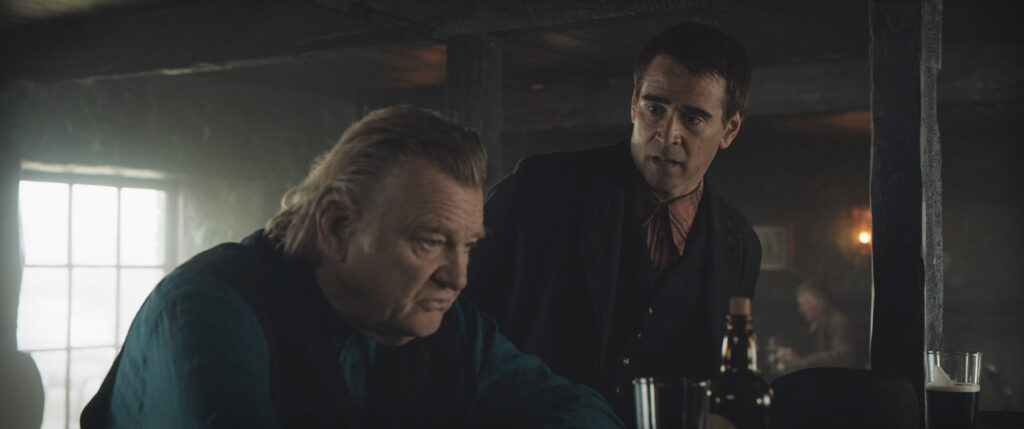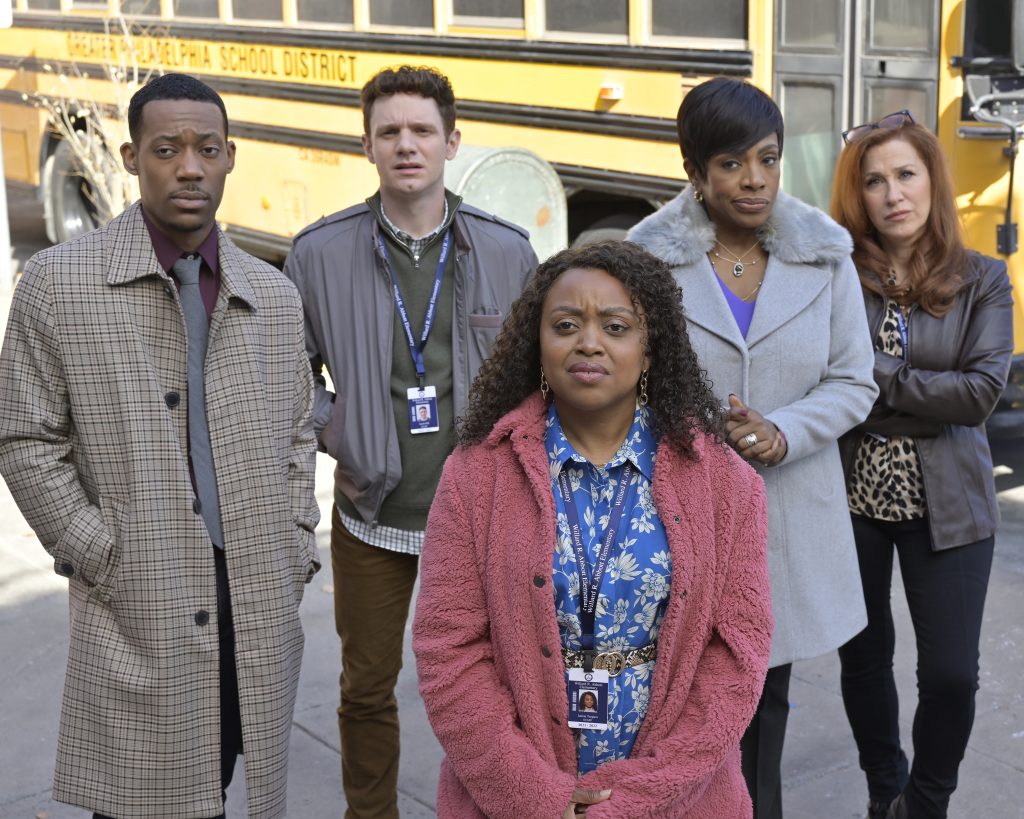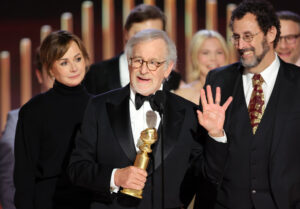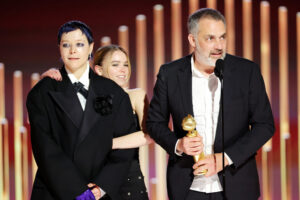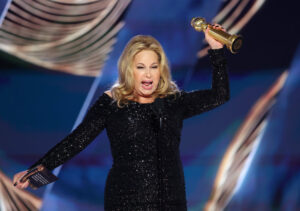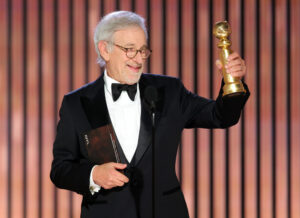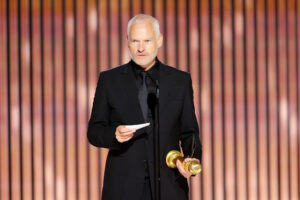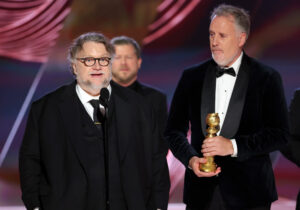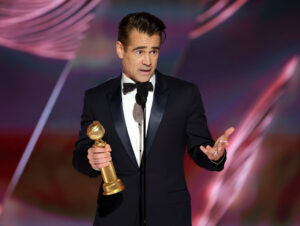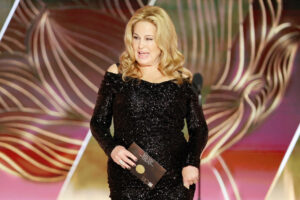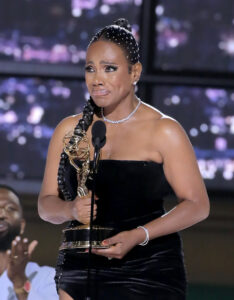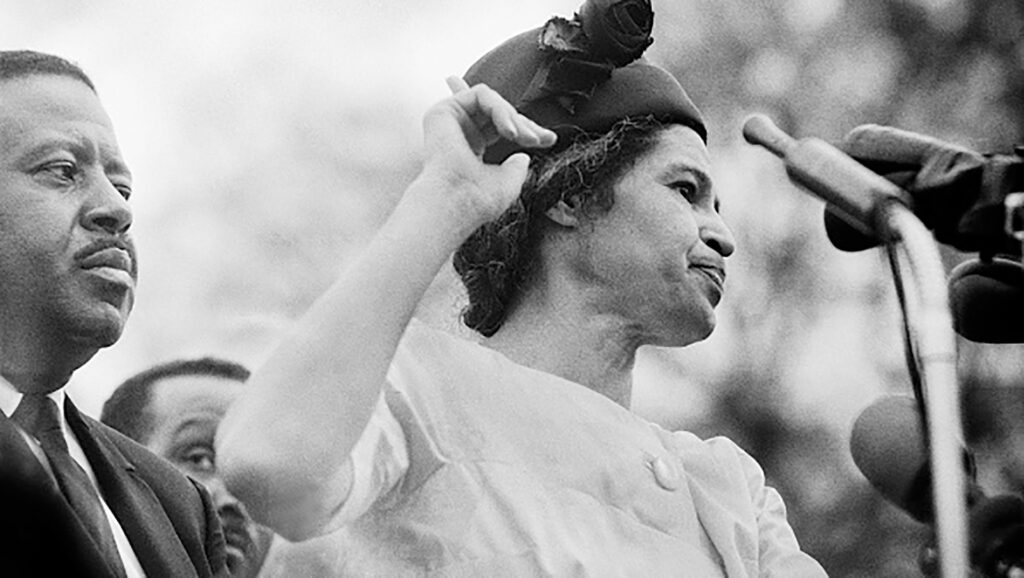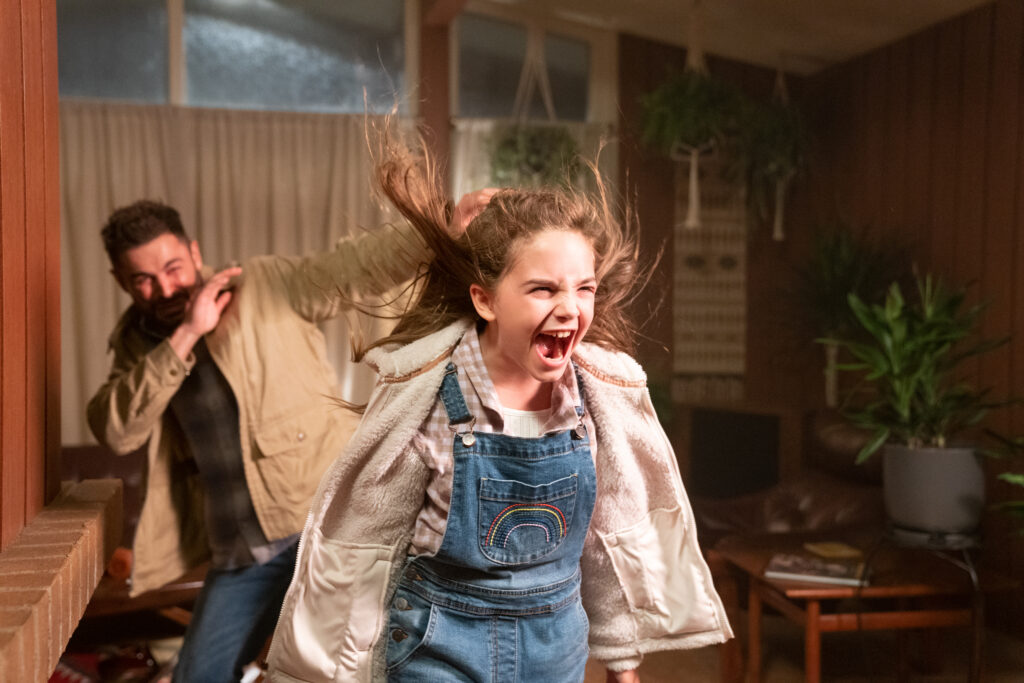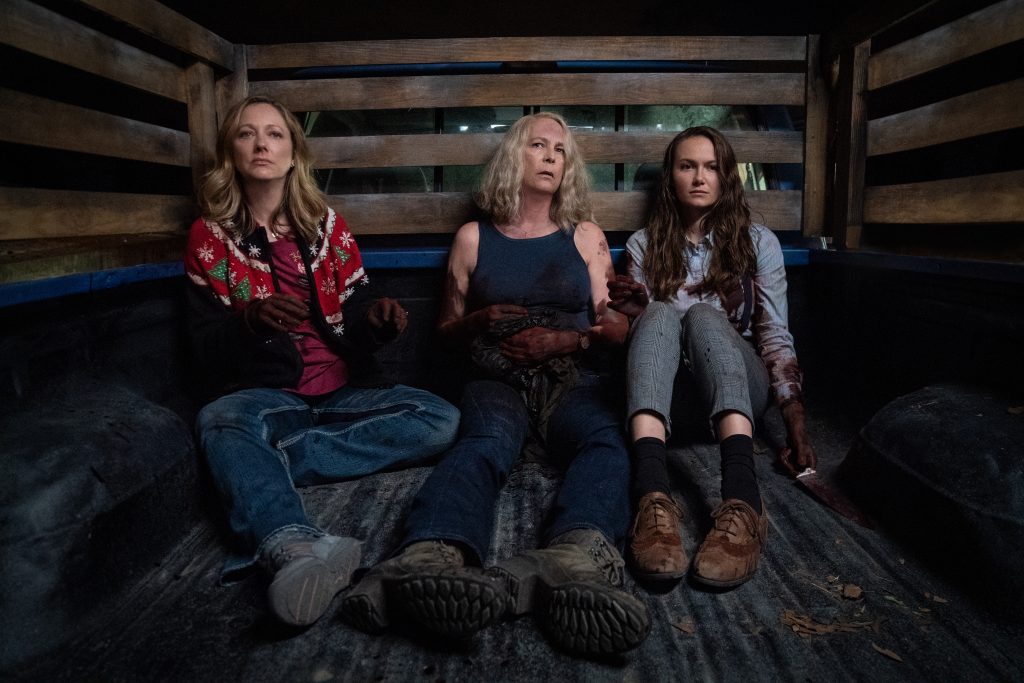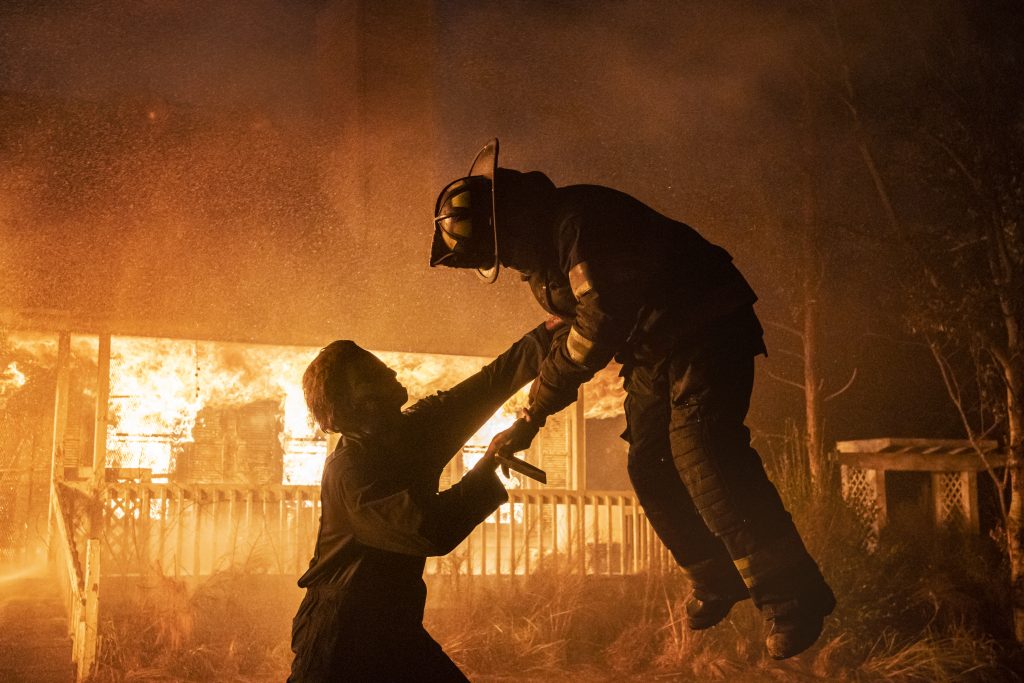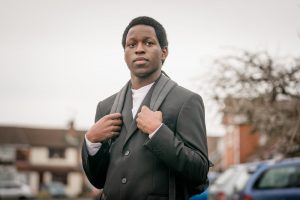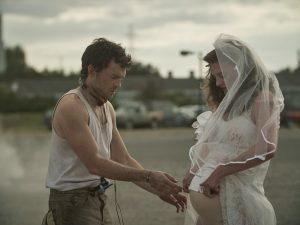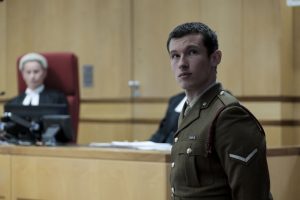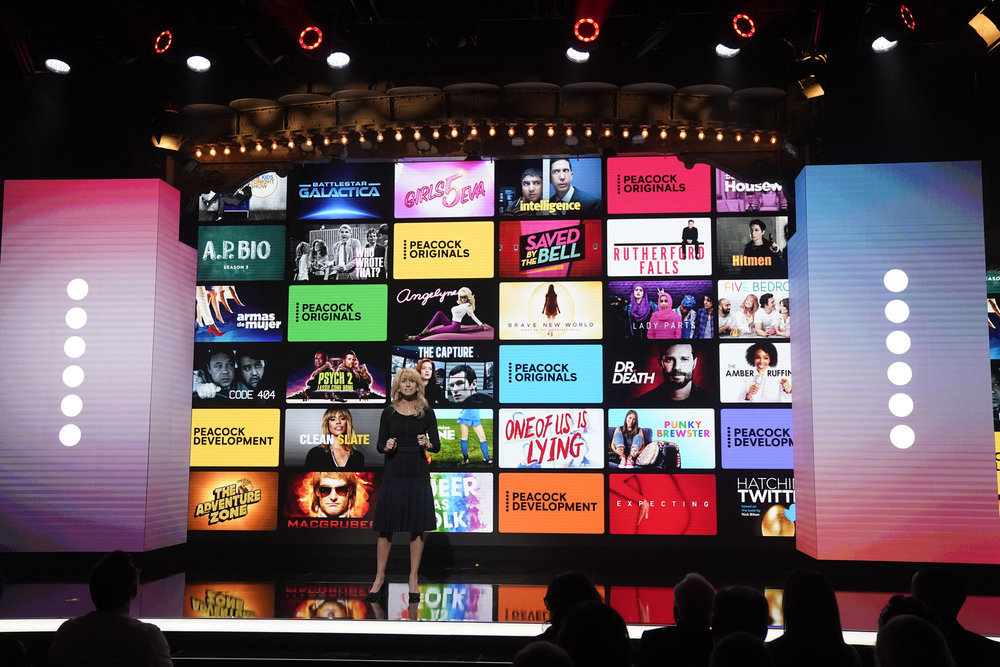At a Comcast investor presentation held in the iconic Studio 8H of 30 Rock, NBCUniversal unveiled Peacock, a free premium ad-supported streaming service with subscription tiers offering more than 600 movies and 400 series, as well as compelling live and on-demand content across news, sports, late night, and reality. From world-class originals and treasured hits, to blockbuster films and streaming channels, Peacock will offer consumers everything fans love to watch, all in one place.
Taking a different strategic approach, the company announced a tiered offering that gives consumers broad access to Peacock across web, mobile and connected-TV devices:
The company expects to bundle Peacock Premium with additional partners in the coming months.
Premium customers can upgrade to an ad-free experience for an additional $5.00 per month, or any customer can purchase the ad-free experience directly for $9.99 per month.
“This is a very exciting time for our company, as we chart the future of entertainment,” said Steve Burke, Chairman of NBCUniversal. “We have one of the most enviable collections of media brands and the strongest ad sales track record in the business. Capitalizing on these key strengths, we are taking a unique approach to streaming that brings value to customers, advertisers and shareholders.”
“Peacock will provide consumers with a destination that goes beyond movies and television, aggregating a variety of content that fans want on one service,” said Matt Strauss, Chairman of Peacock and NBCUniversal Digital Enterprises. “By delivering timely and topical content like breaking news, live sports, and watercooler moments from late night, Peacock is uniquely bringing a pulse to the world of streaming that does not exist in today’s marketplace.”
As previously announced, Peacock will offer some of the most popular NBC and classic TV series of all time, including “30 Rock,” “Bates Motel,” “Battlestar Galactica,” “Brooklyn Nine-Nine,” “Cheers,” “Chrisley Knows Best,” “Covert Affairs,” “Downton Abbey,” “Everybody Loves Raymond,” “Frasier,” “Friday Night Lights,” “House,” “Keeping Up with the Kardashians,” “King of Queens,” “Married…With Children,” “Monk,” “The Office,” “Parks and Recreation,” “Parenthood,” “Psych,” “Royal Pains,” “Saturday Night Live,” “Superstore,” and “Will & Grace.”
Additional newly announced Peacock originals include Tina Fey-produced original series “Girls5Eva,” about a one-hit-wonder girl group from the 90’s that reunites to give their pop star dreams one more shot; international series from NBCUniversal International Studios, including drama thriller “The Capture,” fresh off its rating success on the BBC in the UK, and comedy “Lady Parts,” launching on Channel 4 in the U.K., as well as three highly anticipated new comedies from Sky Studios: “Intelligence” starring David Schwimmer, “Code 404,” and “Hitmen”; a racing series from Dale Earnhardt Jr.; and a behind-the-scenes documentary series that follows USA Basketball superstars on their journey to Tokyo, produced in partnership with the NBA.
The Ryder Cup golf tournament will be coming to the service in September 2020 with featured groups of Europe’s and America’s best pairings.
This is in addition to the previously announced premium original films and animated series in development for Peacock from Universal Pictures and DreamWorks Animation, and hundreds of critically-acclaimed films and box-office hits including “American Pie,” “Bridesmaids,” “Knocked Up,” “Meet the Parents,” “Meet the Fockers,” “A Beautiful Mind,” “Back to the Future,” “Brokeback Mountain,” “Casino,” “Dallas Buyers Club,” “Do the Right Thing,” “Erin Brockovich,” “E.T. The Extra Terrestrial,” “Field of Dreams,” “Jaws,” “Mamma Mia!,” “Shrek,” “The Breakfast Club,” and franchises including “Bourne,” “Despicable Me,” and “Fast & Furious.”
New original series from DreamWorks Animation will also stream on Peacock, including “TrollsTopia,” “Madagascar: A Little Wild,” “The Mighty Ones,” “Cleopatra in Space” and “Where’s Waldo?”
Additionally, popular family film titles from DreamWorks, Illumination Entertainment and Universal Kids will be available on Peacock including “Shrek,” “Shark Tale,” and “Despicable Me.”
Peacock Content Highlights
With 15,000+ hours of content, Peacock has something for everyone – from sports and news, classic films, exciting new originals, next-day episodes of broadcast favorites, to some of the most popular shows in television history. Simply stated, Peacock is the ultimate content destination. Below is a summary of the programming that is expected to be available on Peacock Premium through 2021.
Current Season Broadcast
NBC and Telemundo are home to some of the most acclaimed shows on television today. Peacock users can stream shows like This Is Us, Superstore, Law and Order: SVU, Operación Pacífico, and World of Dance the day after they air, with access to most previously aired current season episodes as well. For fans of late-night, episodes of The Tonight Show Starring Jimmy Fallon and Late Night with Seth Meyers will be available to stream early on Peacock each day.
News & Sports
There has never been a more important time to stay informed. Drawing from trusted and iconic brands like NBC News, Sky News, MSNBC, and CNBC, Peacock users will have access to live news, same-day rebroadcasts, curated shorts, and exclusive 2020 Election coverage.
With the 2020 Tokyo Olympics beginning this summer, Peacock will be the ultimate hub for sports-lovers. Users will have access to live coverage of marquee Olympic events, in addition to analyst commentary, athlete profiles, and more. For fans of the Premier League, Peacock will stream 2,000 hours of programming including over 140 live matches. And for golf enthusiasts, Peacock will cover the Ryder Cup, with live coverage of featured holes and groups. All this – in addition to thousands of hours of original documentaries, curated clips, and more.
Original Series & Films
Peacock originals will feature the industry’s very best directors, producers, writers, and actors, with an impressive collection of shows that are completely unique to the service. Bold dramas like the new adaptation of the classic novel Brave New World will complement innovative comedies like Tina Fey’s Girls5Eva, and an exciting portfolio of unscripted shows, including an original interview series from Kevin Hart, Hart to Heart and a behind the scenes look at the making of Saturday Night Live. Revivals of classic favorites like Saved by the Bell and Battlestar Galactica make Peacock originals impossible to miss.
Television Series Library
10,000+ Hours
Peacock will be home to a collection of iconic library television series, including marquee scripted hits like The Office, Yellowstone, and the Dick Wolf library (over 1,000 hours of the Law and Order and Chicago brands), unscripted tent-poles such as Top Chef and The Kardashians, kids favorites like Curious George, and an expansive library of Spanish-language hits including Betty En NY.
Film Library
1,200+ Hours
Drawing from Universal, DreamWorks, Illumination, and Focus Features’ vast libraries of premier movies and franchises, Peacock will offer over 600 films in its first year after launch. Peacock films will appeal to the entire household and include celebrated titles like Jurassic Park, The Fast and the Furious, E.T. the Extra Terrestrial, Trolls World Tour, The Croods, and Shrek.
Current Season Broadcast
NBC is home to some of the most beloved TV shows. For most of our broadcast primetime slate, Peacock will offer viewers next-day access to new current season episodes, as well as previously aired current season episodes.
Select Next-Day-Airing Titles
America’s Got Talent: Champions
Blindspot
Bluff City Law
Bring the Funny
Chicago Fire
Chicago Med
Chicago P.D.
Council of Dads*
Ellen’s Game of Games
Hollywood Game Night
Indebted*
Law and Order: SVU
Lincoln Rhyme*
Making It
Manifest
New Amsterdam
Perfect Harmony
Songland
Sunnyside
Superstore
The Blacklist
The Inbetween
The Kenan Show*
The Wall
This Is Us
Titan Games
World of Dance
Zoey’s Extraordinary Playlist*
Daytime Broadcasts
Access Hollywood
The Kelly Clarkson Show
Days of Our Lives
Late-Night “Early” Broadcasts
The Tonight Show Starring Jimmy Fallon (available at 8pm ET)
Late Night with Seth Meyers (available at 9pm ET)
Telemundo will also offer several current-season titles next-day, including “Caso Cerrado” and “Operación Pacífico.”
News
Peacock users will have access to full episodes, curated clips, and original shorts covering politics, current events, pop culture, finance, and more.
Same-Day-Airing Broadcasts
NBC Nightly News with Lester Holt, Meet the Press with Chuck Todd
Live Channels
NBC News Now, Sky News, NBC/Sky Global News (new channel)
Short-form Content
Timely and curated clips from TODAY, CNBC, MSNBC, E! News, NBC Nightly News, and Meet the Press
Originals & Documentaries
Original content from the Meet the Press franchise, investigative documentaries including full seasons of “Dateline” and “Lock Up,” and dozens of library documentaries from NBC News and CNBC
Sports
Peacock will be a destination for premium sports content, including live coverage of the 2020 Tokyo Olympics, and dedicated streaming channels.
Olympics Coverage (July – August 2020)
Live coverage of Opening and Closing Ceremonies, and three daily shows:
“Tokyo Live,” a five-hour live morning studio show during Tokyo primetime with live coverage of major events, plus medal ceremonies, engaging segments with athlete profiles, and real-time analysis
“Tokyo Daily Digest,” an hour-long highlight show with the best and buzziest moments, athlete interviews, features, and more
“Tokyo Tonight,” a nightly live studio show with quick turn-around highlights, in addition to medal ceremonies, features, interviews, and primetime previews
Paralympics Coverage (August 2020)
1,000+ hours of exclusive live streaming coverage of the 2020 Paralympic Games
Premier League Games (August 2020 – May 2021)
2,000 hours of Premier League coverage, including over 140 live matches across all teams and a dedicated streaming channel
Ryder Cup Coverage (September 2020)
Live coverage from Whistling Straits of featured holes and groups at the 2020 Ryder Cup
And, Curated Highlights from NBC Sports
Peacock Originals
Peacock will offer an unparalleled slate of original shows, with content for the entire household, and genres spanning drama, comedy, unscripted, and kids.
Scripted Drama Originals
Peacock’s original dramas reach every corner of the drama-loving universe. From Gen-Z (“One of Us is Lying”) to adults (“Angelyne”) to sci-fi (“Battlestar Galactica”) to crime (“Dr. Death”) – anyone can get hooked on a Peacock drama.
SERIES ORDERS
Angelyne
Limited series based on The Hollywood Reporter feature that explored the identity of L.A.’s mysterious billboard bombshell.
Executive Producer/Star: Emmy Rossum
Executive Producers: Sam Esmail, Chad Hamilton, Allison Miller
Director/Executive Producer: Lucy Tcherniak
Consultant: Gary Baum
Studio: UCP
Armas De Mujer
From the team behind Telemundo’s hit La Reina del Sur comes a new dramedy series led by Mexican superstar Kate del Castillo. Four women suffer their worst nightmare: the police arrest their husbands for being linked to the same criminal organization. Accustomed to a life of abundance, they will be forced to join forces in the most unusual manner.
Writer: Jose Luis Acosta
Executive Producer: Marcos Santana
Battlestar Galactica
From the mind of Mr. Robot creator Sam Esmail comes a series that explores a new story within the Battlestar Galactica mythology, the eponymous TV show that saw humanity at war with Cylons, machines of their own creation.
Executive Producers: Sam Esmail, Chad Hamilton
Studio: UCP
Brave New World
Based on Aldous Huxley’s groundbreaking 1932 novel, Brave New World imagines a utopian society that has achieved peace and stability through the prohibition of monogamy, privacy, money, family, and history itself.
Writer/Executive Producer: David Wiener
Director/Executive Producer: Owen Harris
Executive Producers: Grant Morrison, Darryl Frank (Amblin), Justin Falvey (Amblin), Brian Taylor
Starring: Alden Ehrenreich, Jessica Brown Findlay, Harry Lloyd, Kylie Bunbury, Hannah John-Kamen, Sen Mitsuji, Joseph Morgan, Nina Sosanya, Demi Moore
Studio: UCP
The Capture
A timely conspiracy thriller exploring pressing questions about surveillance and misinformation. Set in London, the modern-day spy show begins with the arrest of a former soldier, which spirals into a complex conspiracy involving manipulated video evidence. Produced by Heyday Television.
Director/Writer: Ben Chanan
Executive Producers: David Heyman, Rosie Alison, Ben Irving, Tom Coan, Tom Winchester
Producer: Derek Ritchie
Starring: Callum Turner, Holliday Grainger, Ron Perlman, Famke Janssen, Ben Miles, Ralph Ineson, Paul Ritter, Lia Williams, Laura Haddock
Dr. Death
Based on Wondery’s hit podcast of the same name, Dr. Death tells the terrifying true story of Dr. Christopher Duntsch (Jamie Dornan), a rising star in the Dallas medical community. Young, charismatic and ostensibly brilliant, Dr. Duntsch was building a flourishing neurosurgery practice when everything suddenly changed. Patients entered his operating room for complex but routine spinal surgeries and left permanently maimed or dead. As victims piled up, two fellow physicians, neurosurgeon Robert Henderson (Alec Baldwin) and vascular surgeon Randall Kirby (Christian Slater), set out to stop him. Dr. Death explores the twisted mind of a sociopath and the gross negligence of the system designed to protect the most defenseless among us.
Writer/Executive Producer: Patrick Macmanus
Executive Producers: Todd Black (Escape Artists), Jason Blumenthal (Escape Artists), Steve Tisch (Escape Artists), Hernan Lopez (Wondery), Marshall Lewy (Wondery)
Starring: Jamie Dornan, Alec Baldwin, Christian Slater
Studio: UCP
PILOT ORDERS
One of Us is Lying
Based on Karen M. McManus’s New York Times best-selling novel of the same name, One of Us is Lying is the story of what happens when five strangers walk into detention and only four walk out alive. Everyone is a suspect, and everyone has something to hide.
Writer/Executive Producer: Erica Saleh
Director/Executive Producer: Jennifer Morrison
Author: Karen M. McManus
Executive Producers: John Sacchi (5 More Minutes), Matt Groesch (5 More Minutes)
Starring: Marianly Tejada, Cooper van Grootel, Annalisa Cochrane, Chibuikem Uche, Jessica McLeod, Barrett Carnahan, Melissa Collazo, Mark McKenna
Studio: UCP
Comedy Originals
Nobody knows comedy like Peacock and NBCUniversal, with a dream-team including Tina Fey, Lorne Michaels, Michael Schur, Seth Meyers, and Jimmy Fallon. Peacock will boast an impressive collection of comedies, including a revival of the classic sitcom “Saved by the Bell.”
SERIES ORDERS
The Amber Ruffin Show
Each week The Amber Ruffin Show will showcase Amber’s signature smart-and-silly take on the week. A late-night show with just the good parts – the comedy.
Executive Producer/Star: Amber Ruffin
Executive Producers: Jenny Hagel, Seth Meyers & Mike Shoemaker (Sethmaker Shoemeyers)
A.P. Bio
When disgraced Harvard philosophy professor Jack Griffin loses out on his dream job, he is forced to return to Toledo, Ohio, and work as a high school Advanced Placement biology teacher. As he comes crashing in to Whitlock High School, Jack makes it absolutely clear he will not be teaching any biology. Realizing he has a room full of honor roll students at his disposal, Jack decides instead to use the kids for his own benefit. Eager to prove that he is still king of the castle, Principal Durbin struggles to control the force of nature that is Jack Griffin.
Writer/Executive Producer: Mike O’Brien
Executive Producers: Lorne Michaels, Seth Meyers & Mike Shoemaker (Sethmaker Shoemeyers), Andrew Singer (Broadway Video)
Starring: Glenn Howerton, Patton Oswalt, Lyric Lewis, Mary Sohn, Jean Villepique, Paula Pell
Studio: Universal Television
Code 404
Detective Inspectors Major and Carver are the top crime-fighting duo at the Met Police’s Special Investigation Unit, until Major gets gunned down on the job. But in an experimental artificial intelligence project, he’s brought back from the dead.
Director: Al Campbell
Writer: Daniel Peak (co-creator)
Executive Producers: Tom Miller (co-creator), Sam Mayer (co-creator), Phil Temple, Diederick Santer, Morwenna Gordon
Producer: Charlotte Surtees
Starring: Daniel Mays, Stephen Graham, Anna Maxwell Martin
Studio: Sky Studios
Five Bedrooms
This is a story of five unlikely allies in life who throw caution to the wind and hit upon a unique solution to a common problem. Ignoring the nay-saying of families and friends, they’re teaming up, signing contracts and buying a house together. Yes, it’s a grand social experiment. It might be genius, or it might be a total disaster…but they’re not putting their lives on hold for love any longer. There’s just one glaring problem: they’ll have to live with each other.
Directors: Peter Templeman, Corrie Chen, Fiona Banks
Writers: Michael Lucas, Christine Bartlett
Executive Producers: Pino Amenta, Tracey Robertson, Nathan Mayfield
Starring: Kat Stewart, Stephem Peacocke, Doris Younane, Katie Robertson, Roy Joseph
Girls5Eva
When a one-hit-wonder girl group from the 90’s gets sampled by a young rapper, its members reunite to give their pop star dreams one more shot. They may be grown women balancing spouses, kids, jobs, debt, aging parents, and shoulder pain, but can‘t they also be Girls5Eva?
Writer/Executive Producer: Meredith Scardino
Executive Producers: Tina Fey (Little Stranger, Inc.), Robert Carlock (Bevel Gears), Jeff Richmond, David Miner (3 Arts Entertainment), Eric Gurian (Little Stanger)
Studio: Universal Television
Hitmen
The hits and (more often than not) misses of two hapless, dead broke best friends trying to make their way in the world with only each other to rely on. They also just happen to kill people for a living. Having stumbled into a career in contract killing, misfits Fran and Jamie are not your typical killers for hire. Working out of their scruffy van, each episode follows the hapless duo as they try to carry out their latest hit, inevitably derailed by incompetence, bickering, and inane antics.
Director: Ollie Parsons
Executive Producers: Myfanwy Moore, Siobhan Bachman, Morwenna Gordon
Producer: Arnold Widdowson
Starring: Sue Perkins, Mel Giedroyc, Jason Watkins, Sian Clifford, Asim Chaundry
Studio: Sky Studios
Intelligence
A workplace sitcom set in the UK’s Government Communications Headquarters, which is a kind of weedier, geekier, more bureaucratic version of MI5 and MI6. When an arrogant, maverick NSA agent Jerry comes over from the US to join the team, he enlists an inept and tactless computer analyst Joseph in a power grab that threatens to disrupt the team’s ability to combat cyber terrorism.
Director: Matt Lipsey
Writer/Executive Producer: Nick Mohammed
Executive Producers: David Schwimmer, Nerys Evans, Morwenna Gordon
Co-Executive Producer: Tom Hodges
Producer: Charlie Leech
Starring: David Schwimmer, Nick Mohammed
Studio: Sky Studios
Lady Parts
Lady Parts is an anarchic, laugh-out-loud music comedy following a Muslim female punk band called Lady Parts. It tracks the highs and lows of the band members as seen through the eyes of Amina Hussein – a geeky PhD student who is recruited to be their unlikely lead guitarist. Produced by Working Title TV.
Director/Writer: Nida Manzoor
Executive Producers: Mark Freeland (Working Title TV), Surian Fletcher-Jones (Working Title TV)
Studio: NBCUniversal International Studios
Psych 2: Lassie Come Home (Film)
Santa Barbara Police Chief Carlton Lassiter is ambushed on the job and left for dead. In a vintage Psych-style Hitchcockian nod, he begins to see impossible happenings around his recovery clinic. Shawn and Gus return to Lassie’s side in Santa Barbara and are forced to navigate the personal, the professional, and possibly the supernatural. Separated from their new lives in San Francisco, our heroes find themselves unwelcome in their old stomping grounds as they secretly untangle a twisted case without the benefit of the police, their loved ones, or the quality sourdough bakeries of the Bay Area. What they uncover will change the course of their relationships forever.
Writer/Director/Executive Producer: Steve Frank
Writer/Executive Producer/Star: James Roday
Writer: Andy Berman
Executive Producers: Chris Henzie, Dulé Hill
Starring: James Roday, Dulé Hill, Maggie Lawson, Kirsten Nelson, Corbin Bernsen, Tim Omundson
Studio: UCP
Punky Brewster
In this continuation of the iconic 80s sitcom about a bright young girl raised by a foster dad, Punky is now a single mother of three trying to get her life back on track when she meets Izzy (Copeland), a young girl in the foster system who reminds Punky a lot of her younger self.
Executive Producer/Star: Soleil Moon Frye
Writers/Executive Producers: Steve Armogida, Jim Armogida
Director/Executive Producer: Jonathan Judge
Executive Producers: Jimmy Fox (All3Media), Tim Pastore (All3Media), David Duclon
Starring: Soleil Moon Frye, Cherie Johnson, Quinn Copeland, Lauren Donzis, Oliver De Los Santos, and Noah Cottrell. Freddie Prinze Jr. guest stars in the pilot.
Studio: UCP/Universal Television
Rutherford Falls
A small town in upstate New York is turned upside down when local legend and town namesake, Nathan Rutherford (Ed Helms) fights the moving of a historical statue.
Writer/Executive Producer/Star: Ed Helms
Writers/Executive Producers: Michael Schur (Fremulon), Sierra Teller Ornelas
Executive Producers: David Miner (3 Arts Entertainment), Mike Falbo (Pacific Electric), Morgan Sackett
Studio: Universal Television
Saved by the Bell
When California governor Zack Morris gets into hot water for closing too many low-income high schools, he proposes they send the affected students to the highest performing schools in the state – including Bayside High. The influx of new students gives the over privileged Bayside kids a much needed and hilarious dose of reality.
Writer/Executive Producer: Tracey Wigfield
Director/Executive Producer: Trent O’Donnell
Executive Producers: Peter Engel, Franco Bario
Starring: Mario Lopez (Producer), Elizabeth Berkley (Producer), John Michael Higgins, Josie Totah
Studio: Universal Television
The Kids Tonight Show
The Kids Tonight Show is the only late-night talk show for kids, by kids. Kids doing a monologue, kids playing games, and kids interviewing the biggest stars in the world. It’s everything you love about Jimmy Fallon, but the kids are in charge.
Produced by Universal Television Alternative Studio in association with Matador Content LLC and Electric Hot Dog, Inc.
Executive Producers: Jimmy Fallon (Electric Hot Dog, Inc.), Jay Peterson (Matador Content), Todd Lubin (Matador Content), Mark Efman (BoomTown Content), Paul Ricci (BoomTown Content)
Who Wrote That
A docuseries that gives a behind the scenes look at Saturday Night Live’s most important writers.
Executive Producers: Lorne Michaels, Andy Breckman, Susan Morrison, Andrew Singer & Erin Doyle (Broadway Video), Derik Murray & Brian Gersh (Network Entertainment), Erik Kenward, Howard Klein (3 Arts Entertainment)
Director: Brent Hodge
Studio: Universal Television Alternative Studio
Kids Originals
Peacock’s original kids shows will feature top IP from DreamWorks as well as the first new “Curious George” episode in 6 years.
SERIES ORDERS
Archibald’s Next Big Thing
From the creative mind of Tony Hale (Veep), Archibald’s Next Big Thing is the story of Archibald Strutter, a chicken who ‘yes-ands’ his way through life. Archibald and his siblings live in Crackridge, a close-knit community filled with an ensemble of quirky characters. Archibald’s adventurous spirit often gets him in over his head, but he always manages to leave his world better than when he found it. Through Archibald’s unique perspective, we discover that things are seldom perfect and instead learn to focus on the humor and beauty of life’s imperfections.
Dragon Rescue Riders
Executive produced by Jack Thomas (Dragons: Race to the Edge), Dragons: Rescue Riders takes our young heroes to new highs when Dak, Leyla and their dragon friends find strange crystals that change their powers in fantastic and unexpected ways. And to new lows when they discover the sunken city of Valantis – a place filled with much dragon knowledge and danger.
DreamWorks Where’s Waldo?
DreamWorks Where’s Waldo? brings the iconic character to life in a new animated series from executive producer FM De Marco (Spy Kids: Mission Critical) and co-executive producer John Tellegen (Spy Kids: Mission Critical). Twelve-year- old Waldo and his best friend Wenda are members of the Worldwide Wanderer Society—the international order of curious travelers who circle the globe celebrating cultures and solving problems through observation. Their mentor—Wizard Whitebeard, a seasoned wanderer—sends these inquisitive young adventurers on international travel missions so they can earn their stripes and someday become wizard-level wanderers too. But standing in Waldo and Wenda’s way is their rival Odlulu, who can’t help but cause trouble wherever she goes.
Curious George
For more than 60 years the world has followed the adventures of a curious little monkey named George and his friend the Man with the Yellow Hat. Created by Margret and H.A. Rey, Curious George was first published in 1941 and has remained consistently beloved by children ever since. This animated series continues with that tradition as it introduces George to a whole new adoring generation. With a focus on education, the series incorporates early science and math content and draws upon George’s curiosity-driven adventures to target pre-school age viewers. George’s entertaining and ultimately informative experiences have proven to parents and children worldwide that there is nothing wrong with wanting to learn about the world around you!
Sports Originals
Peacock will be home to fascinating sports documentaries that capture the excitement, passion, and intrigue of sports’ most compelling stories.
SERIES ORDERS
Dream Team 2020
Follow USA Basketball’s top superstars on their journey to Tokyo in this exclusive, behind the scenes documentary series produced in partnership with NBA Entertainment. We’ll take you inside the 2020 Dream Team’s training camp, exhibition games and preparation for the 2020 Olympics, where Team USA is expected to make another gold medal run.
Hot Water: In Deep with Ryan Lochte
At the 2016 Rio Olympics Ryan Lochte was at the center of a scandal that has since overshadowed his long and decorated swimming career. Now a 35-year-old husband and father of two young children, Lochte is hoping for one more chance to make Team USA, and prove he’s not the same man he was four years ago.
United States of Speed
From Jesse Owens to Carl Lewis to Maurice Greene, there is a proud tradition of sprinting success in the United States. However in recent years, Jamaica’s Usain Bolt has been unbeatable at the Olympics. Now that the fastest man of all time has retired, meet the Americans who aim to put Team USA back on top in the sprints.
Run Through the Line
Nike founder Phil Knight and his friends take viewers through the creation of his world-renowned company and the ambitions he still chases at 81 years young. Based loosely on Knight’s best-selling memoir, Shoe Dog.
The Greatest Race
You probably remember where you were when you saw it. Michael Phelps and his teammates had fallen hopelessly behind race favorite France in the 4×100 relay at the 2008 Beijing Olympics. In the final leg, 32-year-old American Jason Lezak was losing ground to Alain Bernard, the 100m world record holder and anchor of the seemingly unbeatable French team. Then the impossible happened. Hear from the swimmers on both sides of the epic relay as we revisit The Greatest Race.
Untitled Dale Earnhardt Jr. Series
Created and hosted by Dale Earnhardt Jr., this series is an exploratory look at great racing cathedrals of the past. Dale Jr. tells the stories of speedways that have been forgotten, abandoned, and overtaken by nature.
Scripted Series Library
Peacock will be home to the best scripted series library, including favorites like “The Office,” “Parks and Recreation,” and the Dick Wolf library (“Law and Order” & “Chicago” brands).
Select Titles Coming in 2020/21 Include:
30 Rock
A-Team
Bates Motel
Battlestar Galactica
Brooklyn Nine-Nine
Chicago Fire
Chicago Med
Chicago P.D.
Cheers
Covert Affairs
Crossing Jordan
Downton Abbey
Everybody Loves Raymond
Frasier
Friday Night Lights
Heroes
House
Jeff Foxworthy Show
King of Queens
Knight Rider
Law and Order
Law and Order: Criminal Intent
Law and Order: SVU
Leave it to Beaver
Magnum P.I. (1980)
Married… With Children
Miami Vice (1984)
Monk
Murder She Wrote
New Amsterdam
Parenthood
Parks & Recreation
Psych
Roseanne
Royal Pains
Saturday Night Live
Saved by the Bell
Suits
Superstore
The George Lopez Show
The Mindy Project
The Office
The Purge
Two and a Half Men
Will & Grace
Yellowstone
Unscripted Series Library
Peacock will be a destination for premier unscripted content, with drama, food, crime, and more, including the most popular franchises on TV today.
Select Titles Coming in 2020/21 Include:
American Greed
American Ninja Warrior
Bad Girls Club
Below Deck
Botched
Chrisley Knows Best
Dateline
Don’t Be Tardy
Face Off
Flipping Out
Hollywood Game Night
Hollywood Medium
Keeping Up with the Kardashians
Killer Couples
Lock-Up
Married to Medicine
Million Dollar Listing
Paranormal Witness
Snapped
Southern Charm franchise
Summer House
The Profit
The Real Housewives franchise
Top Chef
Kids Library
Peacock will feature a library of top kids films and shows that range from new friends to characters beloved for generations.
Select Titles Coming in 2020/21 Include:
3-2-1 Penguins
Beethoven
Care Bears
Cleopatra in Space
Curious George library
Father of the Pride
Fievel’s American Tail
He-Man & Masters of the Universe
Kody Kapow
Madagascar: A Little Wild
Maisy
New Adventures of He-Man
New Adventures of Zorro
Postman Pat
Punky Brewster (Animated)
Sabrina the Teenage Witch
She-Ra
Shelley Duvall’s Bedtime Stories
The Chica Show
The Mighty Ones
TrollsTopia
Voltron Force
Voltron Defender of the Universe
Woody Woodpecker
Zafari
Hispanic Library
Peacock will offer the large and growing U.S. Latino audience premium programming from the #1 Spanish-language network, Telemundo. The platform will feature popular library titles like “100 Días Para Enamorarnos,” “Betty in NY,” and “Preso No. 1.”
Select Titles Coming in 2020/21 Include:
100 Días para Enamorarnos
Al Otro Lado Del Muro
Betty En NY
Chiquis N’ Control
Corazón Valiente
¿Dónde está Elisa?
El Barón
El Chema
El Rostro De La Venganza
Guerra de Ídolos
Historias De La Virgen Morena
José José
La Querida Del Centauro
Larrymania
Más Sabe El Diablo
Mi Familia Perfecta
Perro Amor
Preso No. 1
¿Quién es Quién?
Reina De Corazones
Relaciones Peligrosas
Santa Diabla
The Riveras
Un Poquito Tuyo
Victoria
Film Library
Drawing from Universal, DreamWorks, Illumination, and Focus Features’ extensive libraries, Peacock will offer over 600 titles.
Select Titles Coming in 2020/21 Include:
A Beautiful Mind
American Gangster
American Pie
American Psycho
Big Fat Liar
Big Lebowski
Boss Baby
Bridesmaids
Brokeback Mountain
Bruno
Casino
Changeling
Chicken Run
Children of Men
Cinderella Man
Dallas Buyers Club
Definitely Maybe
Despicable Me
Devil
Do the Right Thing
Dune
E.T. the Extra Terrestrial
Erin Brockovich
Evan Almighty
Field of Dreams
Forgetting Sarah Marshall
Get Him to the Greek
Heat (1986)
Hellboy II: The Golden Army
How to Train Your Dragon
It’s Complicated
Jurassic Park
Jurassic Park III
Jurassic Park: The Lost World
Kicking & Screaming
King Kong
Knocked Up
Liar, Liar
Little Fockers
Little Rascals
Love Happens
Mamma Mia!
Meet Joe Black
Meet the Fockers
Meet the Parents
Moonrise Kingdom
Parenthood
Prince of Egypt
Psycho
Ray
Scent of a Woman
Schindler’s List
Shark Tale
Shrek
Sinbad
Something New
Spirit: Stallion of the Cimarron
Tale of Despereaux
The Blair Witch Project
The Blues Brothers
The Bourne Identity
The Bourne Supremacy
The Break-Up
The Breakfast Club
The Croods
The Fast and The Furious
The Fast and the Furious: Tokyo Drift
The Good Shepherd
The Graduate
The Kids Are Alright
The Mummy
The Mummy Returns
The Road to El Dorado
The Scorpion King
Trolls World Tour
Waiting…
Wanted
What Dreams May Come
You, Me and Dupree
Peacock Virtual Channels
Virtual Channels provide users a unique lean-back experience, with 24/7 feeds of curated content. By the end of 2020, users will have access to dozens of virtual channels.
Select Virtual Channels Include:
Art House: Indie films with small budgets and big acclaim
Family Movie Night: Films for the whole family
Get Spooked: Scary movies to keep you up all night
L&O DUN DUN: Law & Order all the time
Latino Now by Telemundo: Películas y series en Español
Laugh it Out: All comedy, all the time
Nail Biters: Intense thrillers
Olympics Docs: The stories behind the biggest Olympic athletes
Olympics Profiles: Compelling stories about the athletes of the 2020 Tokyo Olympics
Out of This World: Sci-fi & fantasy that will blow your mind
Peachicks: Keeping toddlers entertained and educated
Peacock Kids: Shows every 6-11 year-old will love
Peacock Poker: Like the best seat at a casino, 24/7
Peacock Sports: Live, replays, and highlights from your favorite sports
Rotten Tomatoes: Fresh film and TV recommendations, hot trailers, breaking news, and top moments
SNL Vault: Every SNL season from Chevy to Che
Tear Jerkers: Movies with a side of tissues
The Ones You Love: The can’t-go-wrong classic TV and movies
True Crime: Real crimes. Real people.
